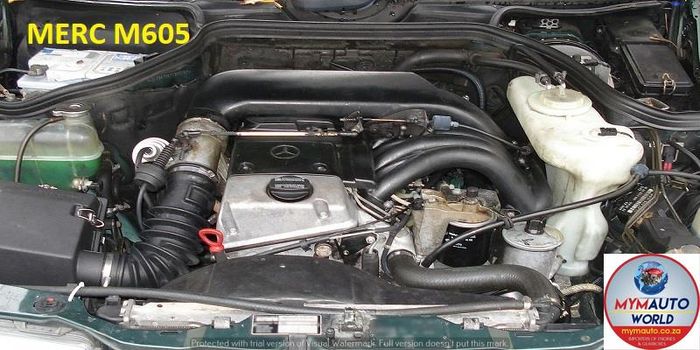Opel Corsa Engine: Whatever You Need to Know Before Acquiring
Opel Corsa Engine: Whatever You Need to Know Before Acquiring
Blog Article
Discovering the Inner Operation of a Compact Automobile's Engine System
As motorists, we frequently take for approved the elaborate procedures that happen within the boundaries of our automobile's engine system. The small yet intricate machinery that drives us ahead is a wonder of engineering accuracy and control. From the regulated surges in the combustion chamber to the precise timing of fuel injection, every element plays an essential duty in the smooth procedure of the engine. In this exploration of a portable lorry's engine system, we will untangle the inner functions of this mechanical symphony, clarifying the enigmas that drive us ahead on our daily trips.
Combustion Process Introduction
The burning process in a small automobile's engine system is a crucial system that successfully converts fuel right into power to power the vehicle. This process happens within the burning chamber of the engine, where gas and air mix, fire up, and create regulated explosions. The combustion process is composed of 4 main stages: consumption, exhaust, compression, and power.
During the consumption stage, the piston moves downward, pulling in a blend of air and fuel right into the combustion chamber. The following phase, compression, includes the piston moving up, pressing the air-fuel mix to increase its strength. Ultimately, in the power phase, the stimulate plug stirs up the compressed combination, resulting in a quick expansion of gases that requires the piston pull back. This down activity generates the power required to drive the lorry. In the exhaust stage, the burnt gases are eliminated from the combustion chamber with the exhaust shutoff, preparing the chamber for the following cycle. This cyclic combustion procedure is fundamental to the operation of a small car's engine system, making certain efficient energy conversion for propulsion.
Piston and Cyndrical Tube Communication

The piston's exact fit within the cyndrical tube is crucial for keeping optimum compression and protecting against energy loss during combustion. Limited clearances in between the piston and cyndrical tube wall surfaces make sure reliable securing, permitting the piston to move smoothly without allowing gases to leakage past. Correct lubrication is additionally essential to minimize rubbing and use between these elements, enhancing longevity and performance.
Furthermore, the layout and materials utilized in manufacturing the piston and cyndrical tube influence engine performance and resilience. Modern engines typically utilize lightweight yet durable materials like light weight aluminum alloys for pistons and cyndrical tube linings to minimize inertia and improve thermal efficiency. Overall, the unified interaction between the piston and cyndrical tube is basic to the engine's capability and general performance.
Gas Injection System Capability
Gas injection systems in portable automobile engines play a vital role in specifically providing gas to the combustion chamber for reliable and controlled ignition. The gas injection system functions by infusing gas into the burning chamber at the ideal minute during the engine's procedure (opel corsa engine). This accurate timing makes certain that the fuel blends evenly with the air for appropriate burning, resulting in improved fuel effectiveness and lowered exhausts
There are mostly 2 sorts of fuel shot systems utilized in portable vehicle engines: port gas shot (PFI) and direct fuel view publisher site injection (DFI) redirected here PFI systems inject gas into the intake port before the intake valve, while DFI systems inject fuel directly right into the burning chamber. Both systems have their benefits, with DFI supplying far better gas atomization and PFI offering a much more cost-effective solution.
Recognizing Engine Cooling Systems
Effective operation of a small lorry's engine depends greatly on the efficiency of its cooling devices. The cooling system in a compact car usually consists of numerous components working with each other to manage the engine temperature. Understanding these engine cooling mechanisms is crucial for preserving the efficiency and long life of a small vehicle's engine system.

Exhaust System Elements Explained
The optimal functioning of a compact lorry's engine cooling systems depends on a complementary system understood as the exhaust system, which makes up different necessary elements for ensuring efficient exhausts and engine performance. The exhaust manifold gathers exhaust gases from the engine's cyndrical tubes and paths them to the catalytic converter.
One critical element of the exhaust system is the oxygen sensing unit, which checks the oxygen degrees in the exhaust gases to help manage gas consumption and guarantee optimal engine performance. opel corsa engine. Additionally, the resonator may exist in some exhaust systems to decrease noise levels. Generally, the exhaust system plays an important role in maintaining engine efficiency, lowering hazardous exhausts, and ensuring a quieter driving experience for small car proprietors

Final Thought
Finally, the portable vehicle's engine system is a complex combination of elements that interact to promote the combustion process, advice transform gas into power, and eliminate waste gases. Understanding the internal workings of the engine system, consisting of the piston and cylinder communication, fuel shot system, engine cooling mechanisms, and exhaust system elements, is essential for keeping optimal efficiency and efficiency of the car.
The burning process in a small lorry's engine system is a critical mechanism that effectively converts gas into power to power the car.Fuel shot systems in small car engines play a critical role in precisely supplying gas to the combustion chamber for regulated and reliable ignition.There are primarily 2 kinds of gas shot systems utilized in portable vehicle engines: port fuel shot (PFI) and direct gas shot (DFI) Recognizing these engine cooling devices is crucial for maintaining the efficiency and long life of a portable automobile's engine system.
The optimum performance of a compact lorry's engine cooling systems depends on a complementary system recognized as the exhaust system, which comprises different vital elements for making certain efficient emissions and engine performance.
Report this page